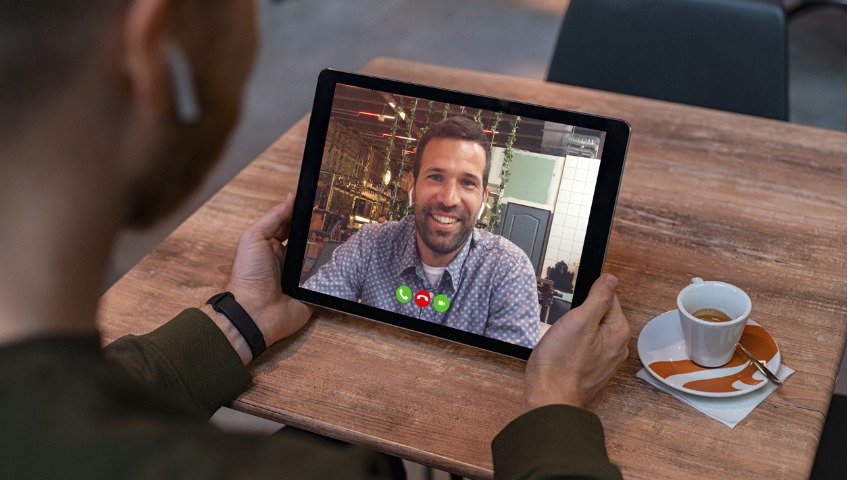The coronavirus (COVID-19) pandemic has suddenly thrust online meetings into the spotlight as some companies and organizations venture into them for the first time while others rely on them much more than ever before. All of them are searching for ways to run the most productive meetings—and to avoid mistakes during a period when time is especially precious.
See also: Virtual Support and Working From Home
“Remote meetings are inherently different from in-person meetings,” writes Howard Tiersky, co-author, along with Heidi Wisbach, of Impactful Online Meetings: How to Run Polished Virtual Working Sessions that are Engaging and Effective. “If you’re not used to running them, you’re going to make tons of mistakes. And those mistakes can have major ramifications in terms of how well people perform once they log off and get back to work.”
Tiersky is the founder of two companies—From: The Digital Transformation Agency and Innovation Loft—and has worked with many clients to create highly engaging online workshops, seminars, conferences and other collaborative experiences. In his book, he identifies five mistakes specifically made by virtual meetings newbies, but which apply to others, as well. Here are the mistakes, with augmented descriptions.
Mistake No. 1: Neglecting one (or more) of the “big five” success keys of online meetings
Tiersky states that meetings must focus on the following success keys.
- Have a clear purpose.
- Get participants in the right mindset.
- Get them fully engaged behaviorally.
- Incorporate high-quality content aligned with the purpose.
- Make it easy to participate.
“If you do all of these correctly, you will have high-impact online meetings,” Tiersky writes. “If you don’t, there’s going to be a lot of awkwardness and inefficiency. Worse, bad meetings can lead to bad workplace performance, which is the last thing any of us need right now.”
- Impact of mistake: Neglecting the success keys can lead to disorganized, nonproductive meetings in which participants are not engaged. This not only results in wasted time, but can adversely impact employee performance.
Mistake No. 2: Holding voice calls instead of videoconferences
During videoconferences, participants are much more connected than during voice calls. Being able to see each other establishes more intimate, human connections, thereby reinforcing team unity. Participants are much more likely to be engaged, because everyone else can see them, and they are much less likely to multitask.
An article in this month’s Harvard Business Review by Strategic Offsite Group’s Bob Frisch and Cary Greene, “What it Takes to Run a Great Virtual Meeting,” emphasizes that it’s important for participants to sit close to the camera to re-create the intimacy of an in-person meeting.
- Impact of mistake: Voice calls can be productive, but are more limited and generally less efficient than videoconferencing, resulting in less value.
Mistake No. 3: Failing to be strategic about sequencing
In her article, “9 Best Practices for Engagement in Virtual Meetings” on the Nten website, master trainer, speaker and author Beth Kanter suggests starting virtual meetings with an ice-breaker or check-in with participants (if feasible).
To begin, Tiersky recommends stating the purpose of the meeting and then discussing any “elephant in the room” topics so that participants will not be preoccupied with them, and can have clear heads as the meeting proceeds.
If any agenda items potentially can create heated discussion, place them in the middle, after less controversial issues have been presented and participants are settled into the meeting. Frisch and Greene stress that it’s important to not avoid tough issues in virtual meetings and to limit the length of presentations so that more time is available for discussion.
If you have an exciting announcement, Tiersky says you might want to create suspense by letting participants know that a surprise is coming but won’t be revealed until the end of the meeting. Or, you might want to reveal it early on to create a positive vibe from the start.
- Impact of mistake: Meetings that are not run smoothly often leave participants feeling confused and wondering what the purpose was.
Mistake No. 4: Not giving people an active role
Clearly, not everyone has a specific “job” in most meetings, but It can be very helpful to provide some roles—such as facilitator, presenter notetaker and timekeeper, among others—for extended meetings. This keeps participants more engaged and energized.
In her article, Kanter encourages these roles to be rotated to spark greater engagement.
- Impact of mistake: Not assigning specific roles can reduce participant engagement, thereby lessening productivity.
Mistake No. 5: Failing to take advantage of breakouts
It is often beneficial to break groups into teams to discuss ideas, prioritize and plan actions. This engages more people and often results in additional valuable input. Zoom, Google Hangouts and other major online meeting platforms offer breakouts.
“We give each team clear instructions for the work they are to do, in writing, and then usually give them a small amount of time to do it, like 20 to 40 minutes,” Tiersky writes. “A compressed time frame forces the group to organize quickly; get to work; and focus on progress, not process or perfection.”
Another option to boost overall engagement, offered by Frisch and Greene, is for the presenter to call on people.
- Impact of mistake: Without breakouts, a small cluster of people do most of the talking, while the potentially valuable ideas of others are never presented.
“When done correctly, online meetings are an incredibly powerful method of enabling collaborative work,” Tiersky writes. “It’s worth investing a bit of time and effort in learning how to maximize them. Frankly, they have the potential to move the needle for your business, and right now, this is more important than it’s ever been.”




